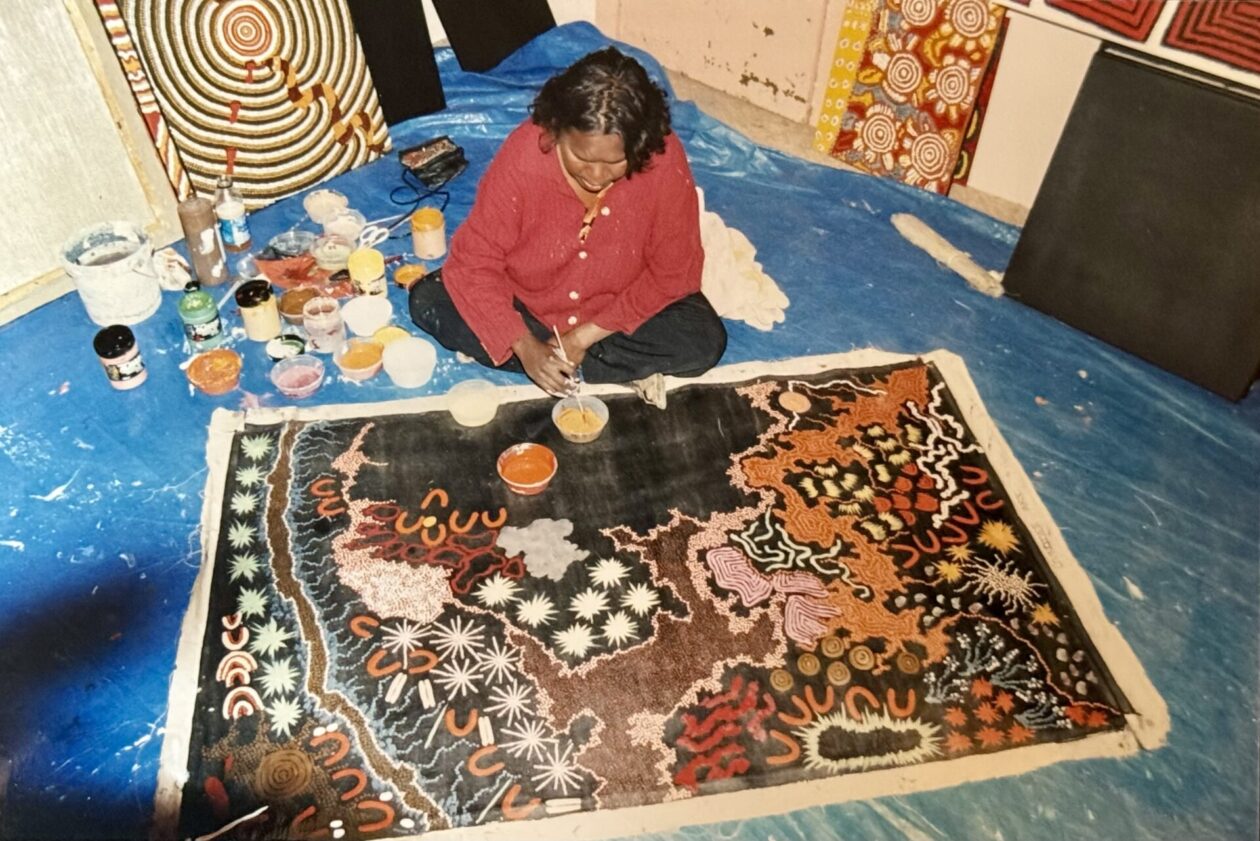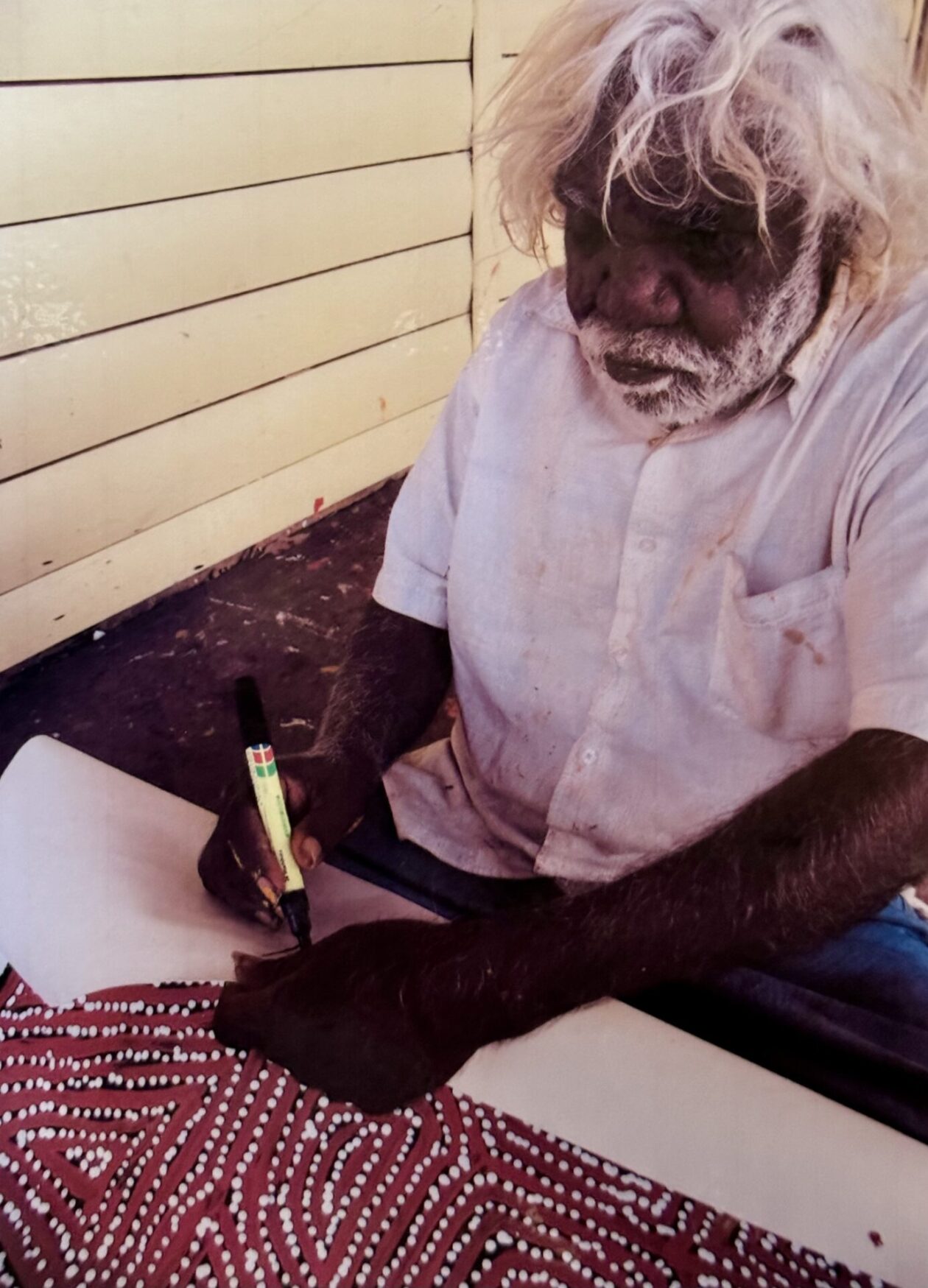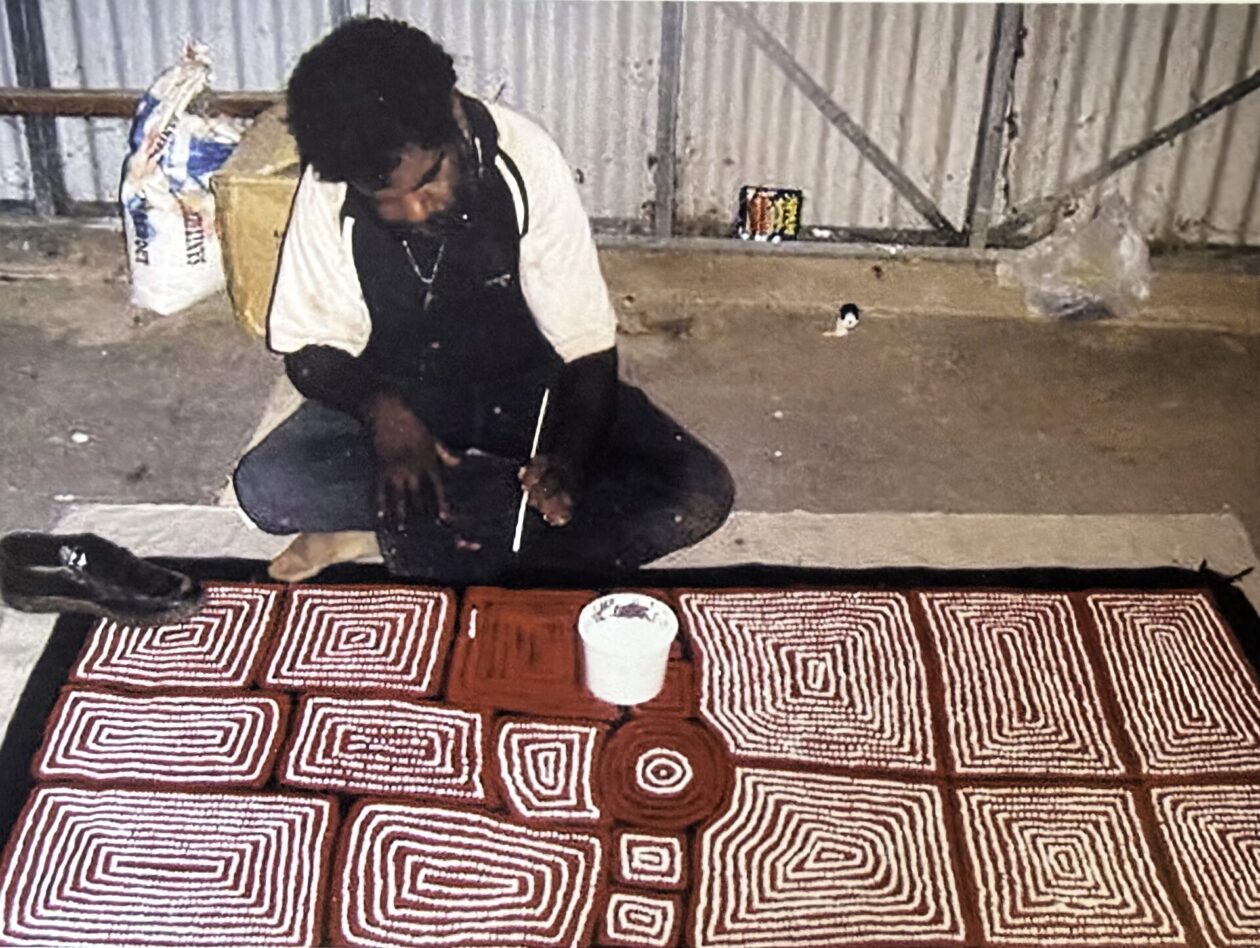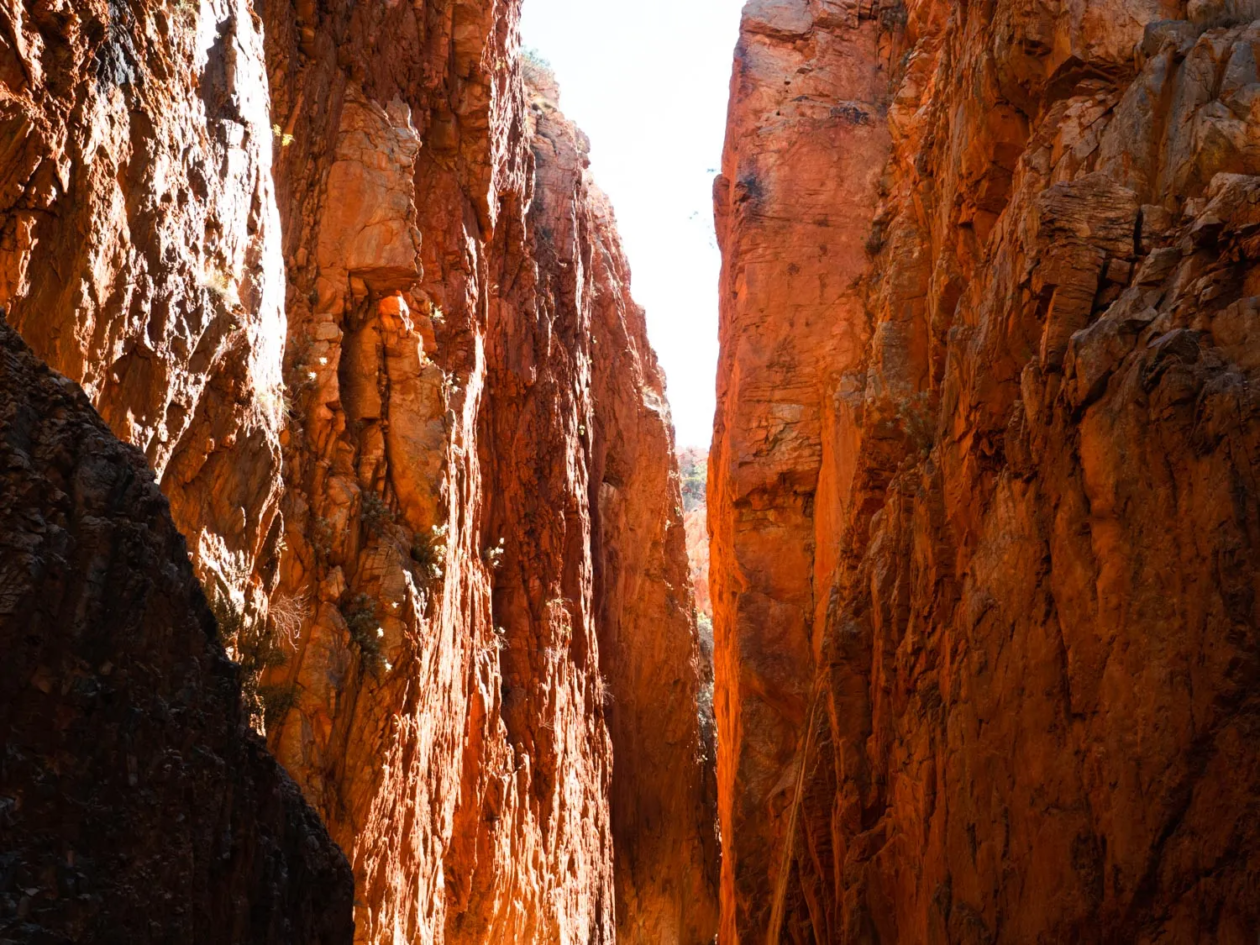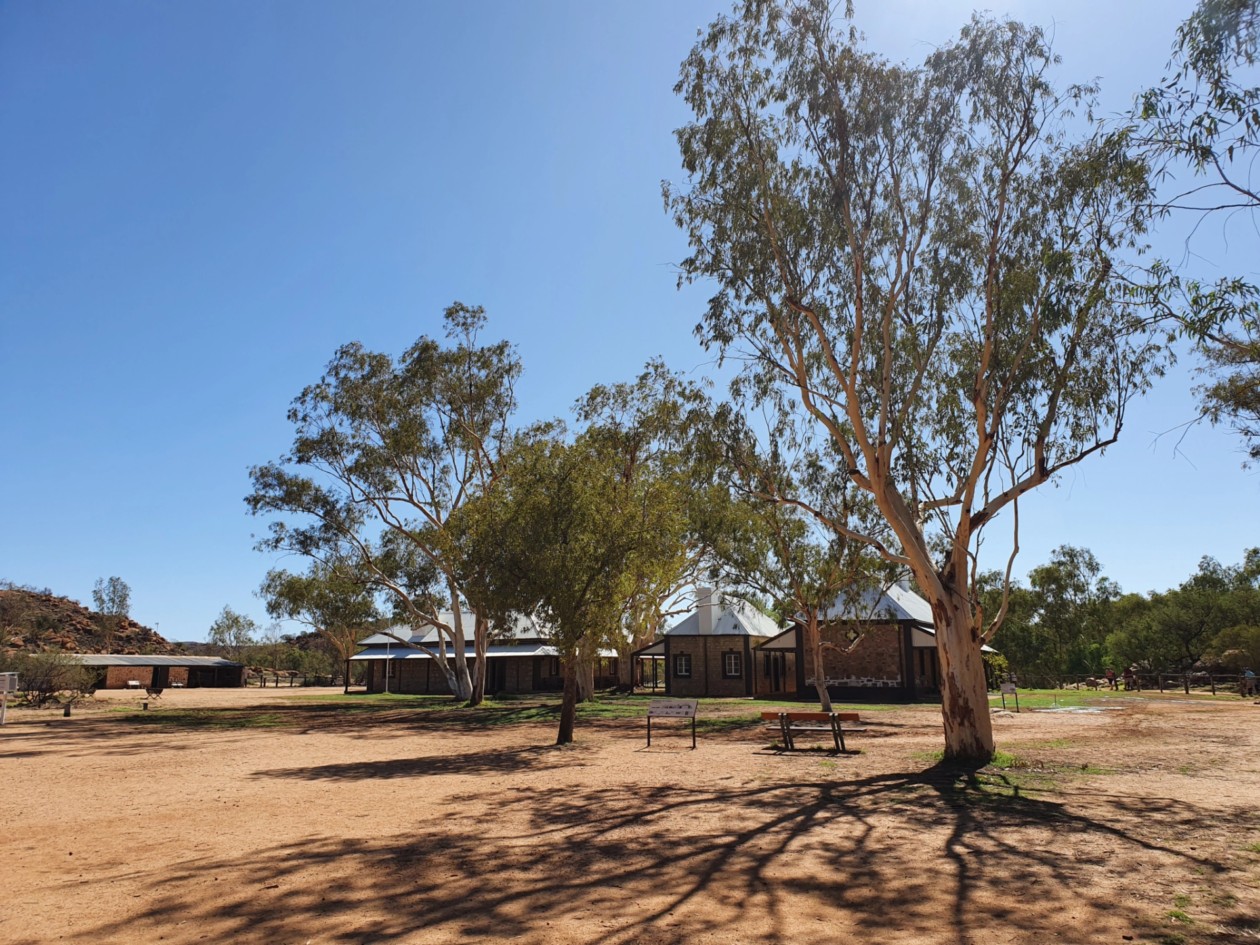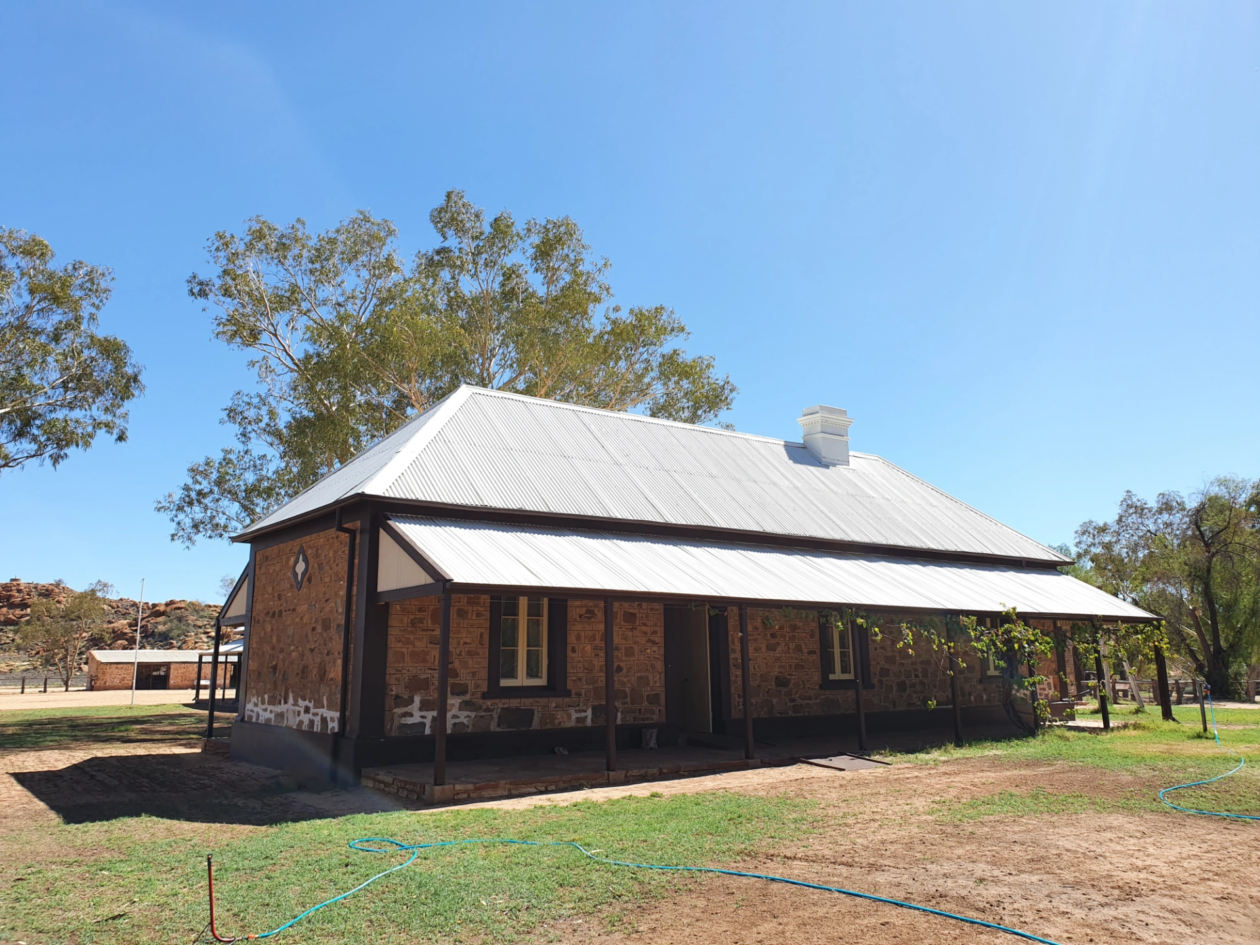- And we’re off — let’s go explore the Australian outback!
- Katherine, Northern Territory
- Kakadu National Park, Northern Territory
- A day in Darwin, Northern Territory
- Kununurra, Western Australia and the Bungle Bungles
- Broome, Western Australia
- Uluru (Ayers Rock)
- Alice Springs, Northern Territory
- Birdsville, Queensland and return to Sydney
After a short flight, we landed in Alice Springs — almost the geographic center of Australia. Of course, I was a bit shocked as we were making our approach to hear the pilot say, “and off on our right is the super secret US-Australian spy base Pine Gap!” Yikes — probably the worst kept secret in town! Yes, in fact, there has been a ground station there since the late 1980s, but it’s a little disconcerting to hear random people in the area talking about it.
Anyway, you may have heard of Alice Springs from a novel by Neville Shute (or a movie by the same name) called “A Town Like Alice.” It’s a romantic story involving an English woman and Australian man who grow to love each other while prisoners of war in Malaya, only to be separated for a number of years before reuniting in a town near Alice Springs. In the meantime, the woman uses an inheritance she has received to create new jobs and generally improve life in Alice Springs. This was largely a fictional novel, but there was an element that struck home for me related to Alice Springs — specifically the birth of the Western Desert aboriginal art movement. While it’s a long story, an Australian school teacher named Geoffrey Bardon spent 18 months in a village called Papaya (about 150 miles west of Alice Springs) where he encouraged members of at least 5 Aboriginal peoples who had been “assimilated” there by the Australian government, to express their history and culture, initially on the sand, and ultimately on canvases that he provided. Originally done by holy men, then men, and then finally women, the paintings were originally done with ochres depicting their “dreaming” — essentially creation stories of how their people came to be and the sacred elements that surround them. Because sacred elements were being depicted, the artists began to use dots to mask these features. Later, the women artists migrated from ochres to acrylics which give the paintings their artistic pop. From humble beginnings where Bardon brought paintings to sell in Alice Springs, a whole movement started where galleries popped up and gallery owners developed space for the Aboriginal artists to work and live in the city. It was amazing walking around the arts district and seeing painters whose names were famous, sitting on the ground, creating their art. Needless to say, we became collectors!
After visiting the art district, we went to the Royal Flying Doctor Service (RFDS) which is known as “Australia’s biggest waiting room.” It is recognized as “one of the largest and most comprehensive aeromedical organizations globally, providing extensive primary health care and 24-hour emergency service to people who live, work, and travel across the 7.69 million square kilometers of Australia.” Traditionally, for people living in the outback, there was little medical care available and people often died before they could complete trips by horse, cart, or camel to reach a doctor. We learned the history of the RFDS, including of its founder, Reverend John Flynn, who was inspired to provide a “mantle of safety” for people in the bush. Finally, “piloted” (get it?!) in 1928, the fledgling organization partnered with QANTAS to provide support to Queensland. By the late 1930s, they were service all the states in Australia. Today they have 79 aircraft operating from 23 bases around Australia. We had to chance to visit the local operations center and museum. Very impressive!
From there, we headed west out into the MacDonnell National Park (or West Macs as the locals call it — Australians are so cute!), that is the hope of the West MacDonnell Ranges, a set of rugged ridge lines that are hundreds of millions of years old. They are thought to be some of the oldest mountains and rock formations in the world. And, amazingly, just like the Blue Mountains outside of Sydney, it’s so close to civilization but you are totally isolated. The West Macs are often the subject of the local Aboriginal People (the Western Arrernte) We didn’t have a lot of time here, so we focused on Standley Chasm, which is known as Angkerle Atwatye by the Arrernte, meaning the Gap of Water — and quite a gap it is rising nearly 250 feet from ground level. It is traditionally a women’s site where cultural rituals would be performed. Our final stop was at the Alice Springs Telegraph Station, the site of the first European settlement in Alice Springs. It was establish in 1872 as a one of twelve repeater stations to relay messages between Darwin and Adelaide along the Overland Telegraph Line. Settlement expanded beyond the Telegraph Station to become the town of Alice Springs (named after a local watering hole — there weren’t any springs). The Station operated for 60 years, after which it was used as a school and housing for Aboriginal children. They were part of what is known as the “Stolen Generation,” the children of Aborigines who were removed from their families by Australian federal and state government agencies and church missions to be indoctrinated. Our guide at the Station was a member of the Stolen Generation and was of 130 children housed at the facility. While he was quite old, he had vivid memories of the time. He told us that it was very tough on families; some mothers would stand at the fence by day and sneak into the facility at night to speak to their children through the windows. Sadly, the children were evacuated to other locations during World War II, meaning that families were forever broken. Very sad.
Tomorrow is our last day — quite bittersweet.
This entry was posted in Australia, Cruising, Northern Territory, Travel

